Invisible Mining, Non-Fungible Trash: Discarded Mining Pit in Northwest China
Qiong Zhang thinks extraction is not only about humans extracting but also about humans being extracted by the pit.
Qiong Zhang
I investigated the process of “mining-discarding” associated with extractivism through observing the discarded mining pits in northwest China. Extraction brings accelerating centrifugal forces, which cause unpredictable spinning; extraction is not only about humans extracting but also about humans being extracted by the pit. The man and the pit, spun together, abandoning each other and devouring each other.
I
In the Gobi Desert in northwest China, there is a city named Baiyin, meaning “white silver,” which has an alternative name, “Copper City.” In 1951, the second year after the establishment of New China, the Chinese national geological team came to Baiyin for exploration. First, they discovered pyrite, and soon they found massive copper mines. After more than 3 years of continuous exploration, the government established a new state-owned company at the suburb of Lanzhou city (where the city of Baiyin is located today) in February 1956, while there were only four or five In the Gobi Desert in northwest China, there is a city named Baiyin, meaning “white silver,” which has an alternative name, “Copper City.” In 1951, the second year after the establishment of New China, the Chinese national geological team came to Baiyin for exploration. First, they discovered pyrite, and soon they found massive copper mines. After more than 3 years of continuous exploration, the government established a new state-owned company at the suburb of Lanzhou city (where the city of Baiyin is located today) in February 1956, while there were only four or five local families.
Since then, Baiyin has been included in the key construction projects of the First Five-Year Plan of New China. Over a thousand technical experts were brought in from all over the country to form the mine blasting team. At the same time, the government brought 20,000 tonnes of explosives from all over the country to Baiyin. A new city, Baiyin, was established because of the mining company. Overnight, technical experts, explosives, and thousands of young people from all over the country responded to the call of the new China and left their hometowns and came together on trains from all directions to this new city founded on the uninhabited Gobi desert in northwest China because of mining. In that year, the Baiyin Company carried out three major mining blasts in the mines. They used the “peel and blast” method to move the hills pressing against the ore. The explosives flattened seven hills that stretched for hundreds of miles, and the mushroom-shaped clouds of smoke that rose from the blast reached over 400 metres high. The scale of the blasting was so large that Western countries thought China was conducting nuclear tests. [1]
After more than 30 years of mining, the pits were closed in April 1988. After more than 30 years of mining, the pits were closed in April 1988. After producing more than 60 million metric tons of copper ore, two huge pits have been left behind at the two mining sites. [2] In 2004, the Baiyin Company declared bankruptcy. In March 2008, it was listed as the first batch of resource-depleted cities in China.
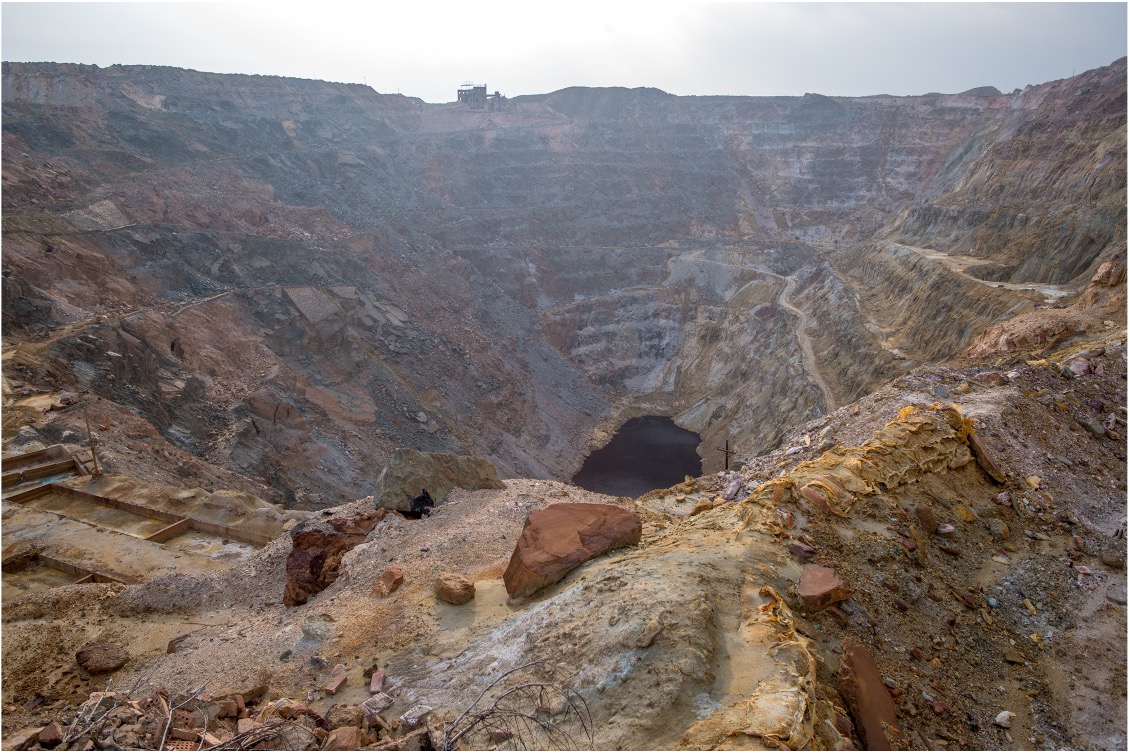
With China’s rapid development, Baiyin, a peculiar city in northwest China that was built up because of its mineral resources, was quickly forgotten and abandoned by the economic development-centric nation when the extraction ended. Abandoned along with it were labors came from all over the country responding to the state’s call to build the socialist economy.
II
In June 2021, the Chinese government issued an unannounced ban calling a halt to bitcoin mining in China. Previously, Chinese miners once accounted for more than 70% of the global bitcoin mining volume [3]. Bitcoin mining was concentrated in western China in areas such as Sichuan, Qinghai, Inner Mongolia and Xinjiang, where electricity is abundant and cheap.
Sichuan, in western China, is dotted with rivers and scattered with over 4,800 large and small hydroelectric power stations. Bitcoin miners set up their mining machines next to hydropower stations to get the cheapest cost of electricity [5]. As the cheap hydroelectricity only lasts for several months during the rainy months of the year, many miners migrate to Inner Mongolia and Xinjiang in Northen China with their mining machines for cheap coal electricity in the winter.
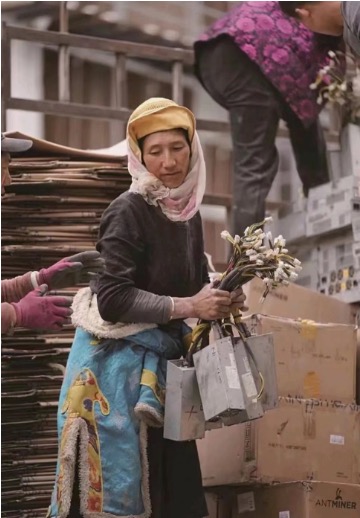
Although electricity is cheap during the rainy season, bitcoin mines located in the deep forests of Sichuan were often hit by sudden downpours and flooding. Once that happens, the machines become a pile of trash. Mining machine manufacturers, collect such discarded machines for less than €1 each to reassemble new miners.
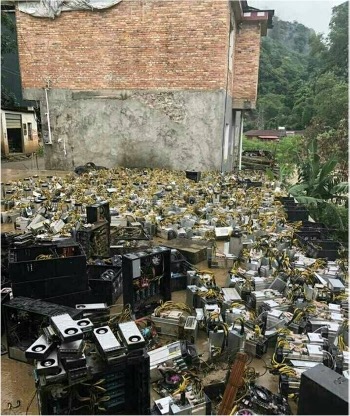
III
Baiyin mines, as an example, were traditionally fixed, with workers congregating, moving towards and living like migrating birds around the mines. Bitcoin mines, on the other hand, are migratory birds themselves due to the migratory nature of the miners, and migrate in pursuit of cheap power sources, from northwest China and the Tibetan areas of Sichuan to Inner Mongolia, Xinjiang, and later Kazakhstan.
In contrast to Baiyin mines, where the previous era’s “use and discard” cycle was approximately 30 years, the equivalent of a worker’s working life, for the bitcoin mining industry, local workers got hired for odd jobs for a year, a few months, or even several weeks. The mines became a mysterious batch of constantly moving concentration boxes. The mines became invisible, moving from the heart of the city to the hidden forests of the mountains, where they could hardly even be found, but were easily flooded and replaced. The mines became invisible, but the pits remained, not on the ground, but in containers ready to be moved.
If one imagines this process of “extraction – discard” as a kind of discus-throwing movement in which the centrifugal force is triggered by one spinning in place, the time period associated with this movement seems to If one imagines this process of “extraction – discard” as a kind of discus-throwing movement in which the centrifugal force is triggered by one spinning in place, the time period associated with this movement seems to become shorter and shorter, while the extraction-discard process is becoming faster and faster. To throw a discus, the man must spin with the discus. The more discs that are thrown, the more the man puts himself in a constant spin. The abandoned pit is like a discus thrown into the air, and in the angle of the discus, it is the dizzy human being who is exhausted and thrown away.
In the performance “Bend the Earth” (Lanzhou, 2020), I put a discarded mattress in the bottom of a sandpit at a construction site in Lanzhou and jumped on it continuously. In contrast to the aforementioned abandoned pits far from residential areas, the sandpit was just around the corner from where I lived at the time, and I walked through it every day for lunch. I noticed that the residents of the neighbourhood seemed unconcerned by the sandpit. They seemed to imagine themselves living in a clean, modern high-rise, pretending that the pit in front of them didn’t exist.In the work I kept jumping as high as I could, trying to get my body out of the sandpit. The repetitive movement of my body jumping and dropping was stopped by a sudden sandstorm. After a while, I did it again, and another sandstorm came and stopped me again. Re-watching this performance, I realized that it was more like me drilling into the bottom of the sandpit than jumping at the sky. Or rather, they were two sides of a same movement.
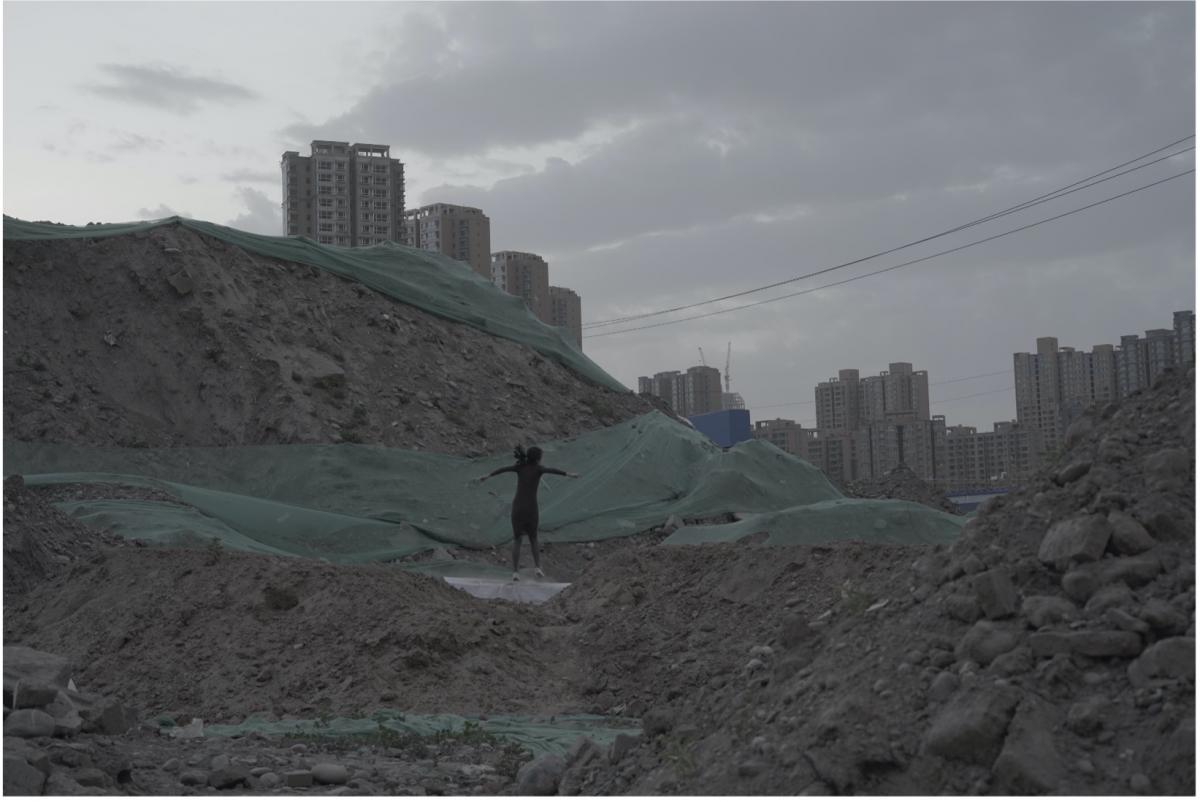
IV
A popular genre of fiction in contemporary China is the “tomb raiding novel”, which is generally a series of stories in which the protagonist searches and excavates for the buried treasures of ancient emperors. Tomb raiding stories often combine archaeology, mining, geographical knowledge, historical legends, western China exploration, human greed towards money and fear towards death.
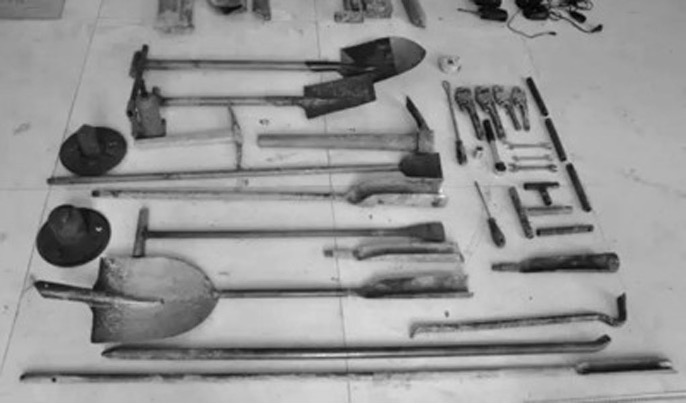
The popular fantasy of making a fortune from tomb raiding in China has led to the invention of all sorts of portable tools to take and test soil samples anywhere and anytime to determine if there might be treasure from ancient times underfoot. I feel there is a mysterious connection between the popularity of this genre of fiction and the mining industry in northwest China.
V
I wrote the poem named Pit in 2016 (translated from Chinese).
Pit
In the morning I turned on the news
The scene – neighbors unfurling a net at rivers edge
Downpour endless
Again and again
Many groups arrived in the morning
Donning gaudy makeup
The leader does not speak
Nobody is speaking
At the moment I was determined to become most demeaned person in the room
I donned florescent garb
And raised my arms
My mind replaying again and again the shooting of the blue truck
A spell of pure white metallic rain
Smelling like gold coins traded in the middle of the sea
Before darkness, the neighbors catching a lobster
A white cockroach passing in and out
The lobster reaching out with long antennae
The downpour closes in
The downpour stirs animals into a furor
No other moment can make them this close
Because of the downpour I head back to the center of the pit
The downpour darkens the south
At dusk the neighbor turns on the faucet
Everyone swallows black clouds – bread as hard as a tooth
A spider weaves a tight-knit wall
The red trash can
Is the last supper
Excessive rain makes me sleepless
Notes
- Huang Jianqiang. ‘History Eye | “China’s first explosion” exploded a copper city in the northwest_Baiyin’ (黄建强. ‘历史眼丨“中国第一爆”爆出西北一座铜城_白银’). https://www.sohu.com/a/398216290_100237836.
- The industrial heritage of the “Copper City” – the former site of the Baiyin Open Pit Mine (‘“铜城”的工业遗产——白银露天矿旧址’). http://www.dayexue.com/Article/yjjg/201405/528.html.
- ‘Cambridge Bitcoin Electricity Consumption Index (CBECI)’. https://ccaf.io/cbeci/mining_map.
- Ding Gang. ‘The women who carry the bitcoin miners|Photographer’s Notebook’ (丁刚. ‘搬运比特币矿机的女工们|摄影手记’). http://www.caixin.com/2021-07-15/101740744.html.
- ‘The world’s bitcoin “mining capital” and why Sichuan’ (’世界比特币“矿都”,为什么是四川’). https://zhuanlan.zhihu.com/p/40091008.
- ’10 novel fans meet to raid tomb, arrested for making homemade explosives to blow up ancient tomb (‘10小说迷相约盗墓 自制炸药图炸古墓被捕’) https://www.kwongwah.com.my/20151110/10小说迷相约盗墓-自制炸药图炸古墓被捕/
Ecological Thinking
This is the course blog for KDOC-24B20 – Ecological Thinking Seminar. In 2024-25, the seminar collaborates with Helsinki Biennial 2025 contextualizing its themes and curatorial vision with discourses and practices in the visual and performing arts. In 2023-24, we explored “Vertical Ecologies” by visual arts, film and performance, co-organized with Curator Giovanna Esposito Yussif of the Museum of Impossible Forms. Previously, in 2022-23, we organized a year-long collaborative research studio with Aarhus University, DK, Research Pavilion 2023 and Helsinki Biennial 2023 on the themes of environmental data, sensing and contamination.
Header image credit: Abelardo Gil-Fournier and Jussi Parikka / Seed, Image, Ground (2020)- With permission from the authors.
Latest posts
Follow blog